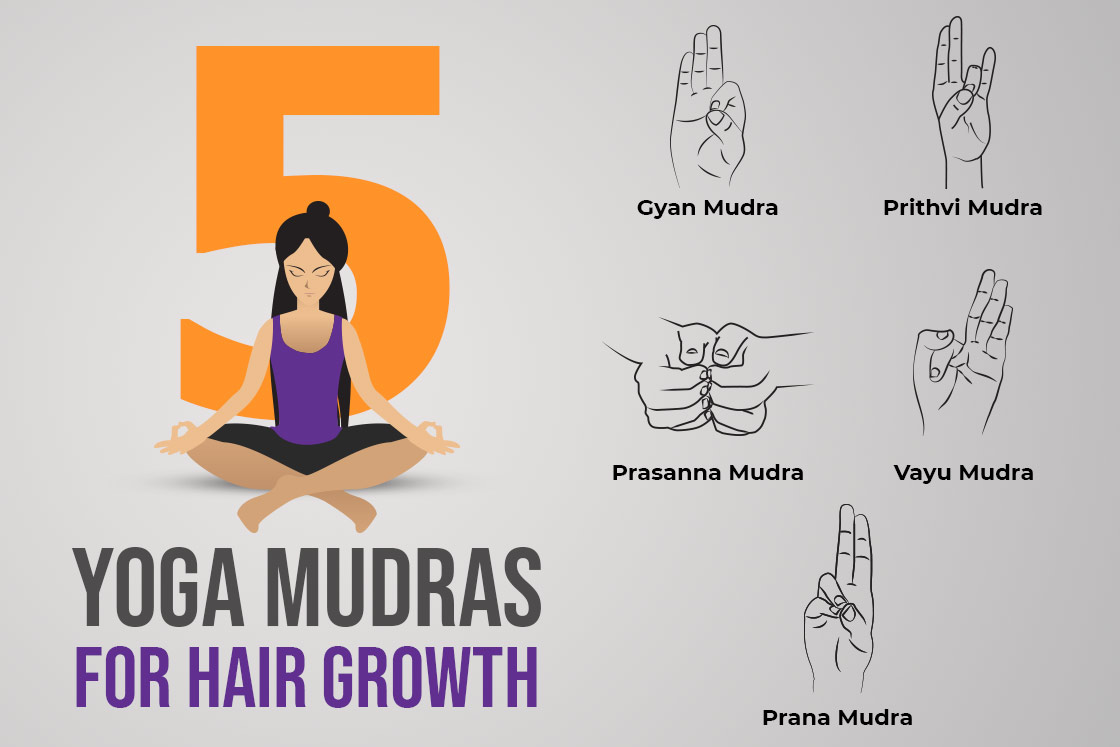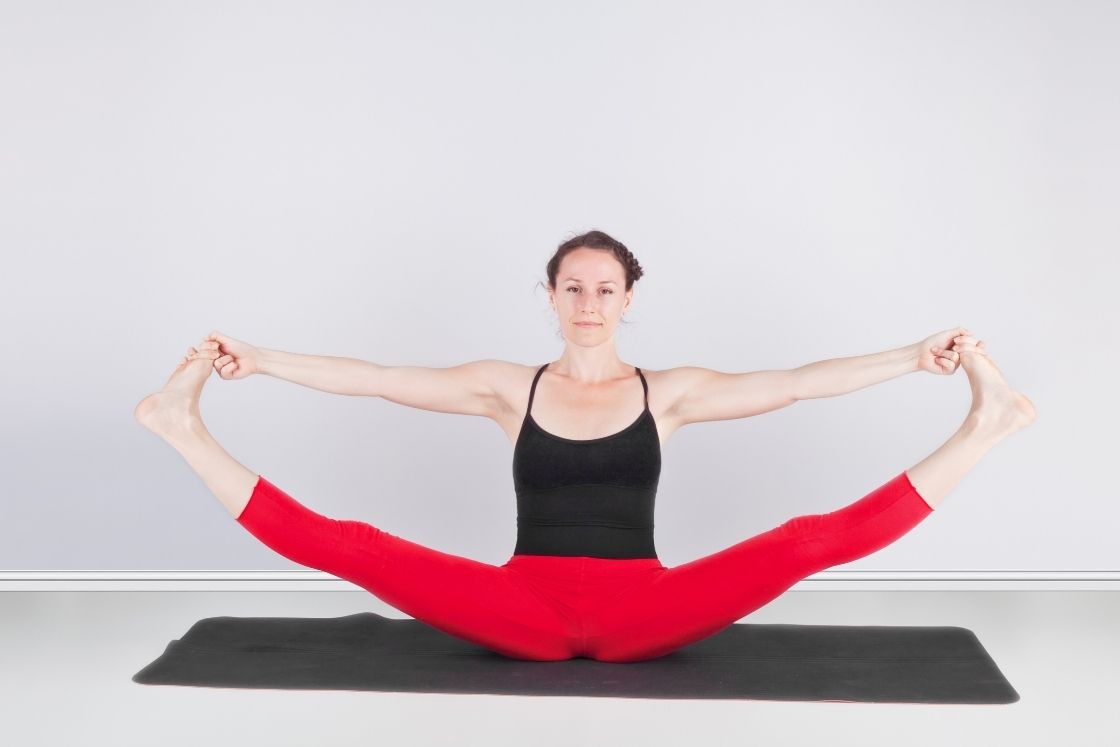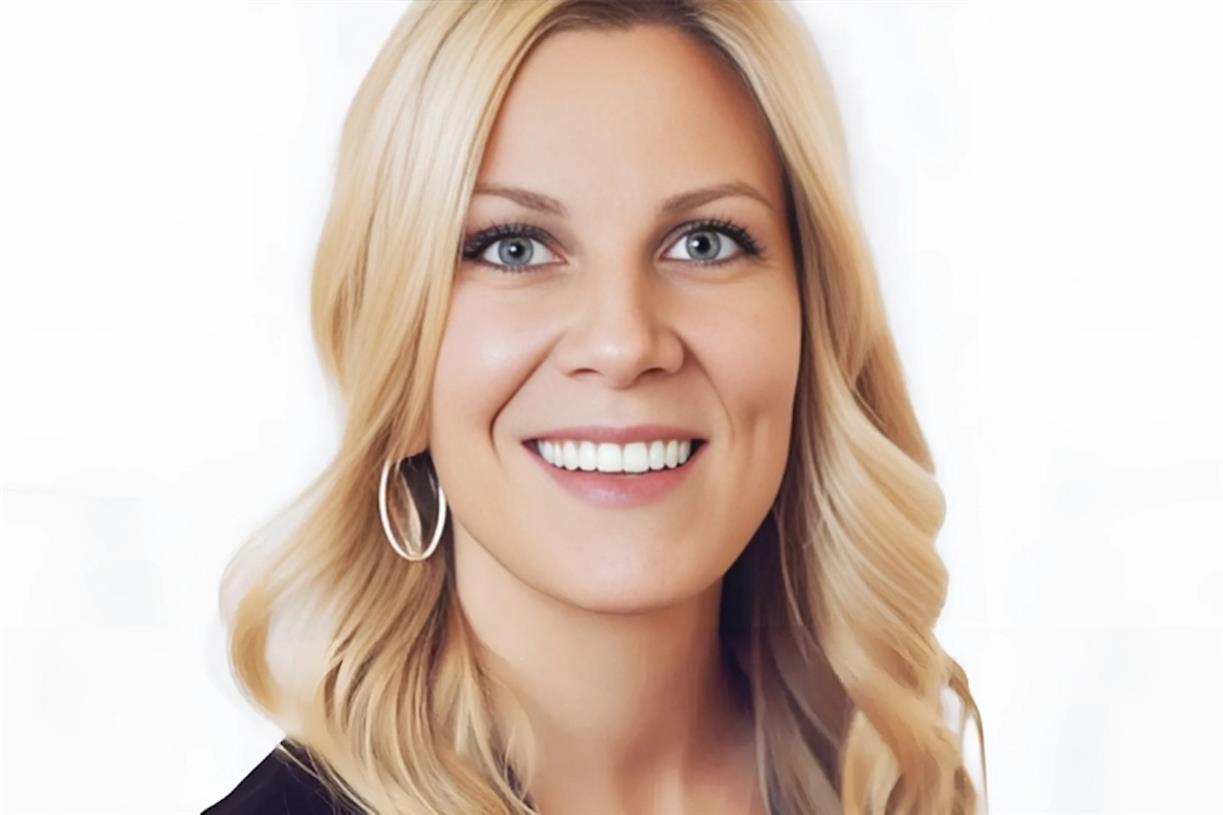Can Mudra Improve Hair Growth and Stop Hair Fall?
Mudra Benefits for Hair Prithvi Mudra Prasanna Mudra Prana Mudra Vayu Mudra Gyan Mudra Lifestyle Changes FAQs Mudras in yoga are hand gestures that can be used for various purposes. We are aware of the common use of mudras...

 Image: Fitsri
Image: FitsriMudras in yoga are hand gestures that can be used for various purposes. We are aware of the common use of mudras in meditation and pranayama exercises in yoga. However, mudra can also be used as a standalone practice to get many health benefits.
One such effective use of mudra is in the prevention of hair loss and growth of hair.
Unlike chemical therapies, mudras address the core cause of hair issues such as hair loss, hair fall, greying, etc, thereby addressing the problem and promoting stronger and healthier hair.
If done on a daily basis, yoga mudras have the ability to stop hair degeneration by restoring hair vitality.
There are various mudras that could help you grow out your tresses. In this article, we will let you know how mudras help with hair growth and some mudras that you can practice regularly.
How does mudra help with hair growth?
Mudras increase blood flow to the scalp and stimulate nutrition delivery to the weak hair roots which result in the growth of hair. Lack of earth element and vitality also causes hair fall and greying of hair. Some mudras have the ability to increase prana energy (vital life force) and restore the earth element thus helping with hair problems.
While performing a mudra, the slight pressure we put on the various parts of fingers stimulates specific nerves, which directly impact the scalp. These nerves help in resolving the hair issues at the core, promoting shiny and lustrous hair and nourished scalp. A healthy scalp leads to healthy hair.
As a result, using specific mudras on a daily basis can help to strengthen hair roots, prevent hair fall, nourish a dry scalp, and thicken hair.
Ayurvedic principle behind mudra’s working
Mudras mainly work on the ayurvedic principle of Dosha. If a dosha gets imbalanced, it leads to poor health and disease. A dosha constitutes of each two of five elements.
Hair abnormalities are the result of an imbalance in five elements that make our body – Agni (fire), Jal (water), Vaayu (air), Prithvi (earth), and Akash (ether/space).
The home of these five elements is in our fingertips, which when tapped in different mudras creates delicate vibrations that transport energy flow to the affected area.
You may manage and control the uneven flow of Vata, Pitta, and Kapha (which are a combination of the 5 elements) throughout the body by stimulating the fingertips through mudras. Mudras can thus aid to address various hair problems and hair fall caused by vitiated doshas by regulating your physiological doshas.
Yoga mudras you can do for hair growth
The following mudras can help you fight most hair problems and ensure hair growth.
1. Prithvi Mudra
 Image source: Canva
Image source: CanvaPrithvi mudra for hair growth aids in the promotion of the earth element which is responsible for dense voluminous hair.
Benefits for hair
Prithvi mudra reduces premature fall and graying of hairs.It gives the hair a strong foundation and strengthens it from the roots up. As a result, hair is less likely to break and has a longer lifespan.It restores moisture in the scalp and reduces inflammation.It enhances follicular blood circulation and encourages fresh hair growth.How to do it
Sit in easy pose (sukhasana) with your hands on your knees, palms facing up. Make prithvi mudra by touching the tip of the ring fingertip and the thumb while keeping the other fingers straight yet relaxed.Close your eyes and focus on your breathing.When to do it
Practice Prithvi mudra for 10-15 minutes thrice a day. Start with dedicating 5 minutes each day, twice a day, and gradually increase the time.The best time to practice it is early morning between 4-6 am every day.2. Prasanna Mudra

Prasanna mudra, also known as Balayam yoga mudra, is nail rubbing exercise to hair growth.
It aids in the restoration of your body’s natural rhythm, which has been disrupted by poor eating habits, a sedentary lifestyle, and pollution effects.
Benefits for hair
Prasanna mudra improves blood circulation and nutrient supply in the scalp and hair roots, resulting in thicker, healthier hair.Reduce the frequency at which your hair greys.Reduces hereditary hair loss caused by alopecia areata, male pattern baldness, and other conditions.It supports brain health and encourages a good night’s sleep.How to do it
Bring the palms in front of your chest.Curl your fingertips and join your nails together. Your thumb will be kept straight.Rub the nails up and down vigorously to create friction.When to do it
You can practice this mudra at any time of the day. Perform the Prasanna mudra for at least 10-20 minutes each day.It is best to practice it on empty stomach.3. Prana Mudra

Prana mudra is among the most effective mudras for simulating prana flow. It aids in the increase of Kapha dosha and the reduction of Pitta dosha. Thus, it is also known as Kapha Kaarak Mudra. The mudra helps energy to flow freely throughout the body when practiced on a regular basis.
Benefits for hair
Reverses and decreases greying of hair.It helps to strengthen and lengthen hair.Better prana flow nourishes hair follicles, which enhances hair growth overall.By restoring Prana, it aids in enhancing the vitality of your scalp tissue.Strengthens the roots to treat hair thinning and dryness.How to do it
Sit in a meditative pose with straight back.Place your hands on your knees with palms facing upwards.Join the tip of the ring and index finger to the thumb. The rest of the fingers will remain straight.Focus on your breathing while keeping your eyes closed.When to do it
The best time to practice this mudra is in the morning for 15-20 minutes thrice a day or for 30-45 minutes at a stretch once a day. The practice of prana mudra should be avoided during the evenings and at night.If you are overweight, are prone to weight gain, or have excessive Kapha dosha, practice this mudra with caution.4. Vayu Mudra
 Source: Shutterstock
Source: ShutterstockVayu Mudra is the body’s seal for the ‘Air element.’ It relieves discomfort by removing extra air from the body. This mudra also has a meditative quality to it. Vayu mudra aids in the reduction of excess Vata in the body.
Benefits for hair
It corrects the mental negativity that produces mental sickness and, as a result, hair loss.Hair is nourished, which helps to treat dry scalp and hair.Controls itching and hair loss on the scalp.How to do it
Sit in a meditative pose with a straight back.Place your hands on your knees with palms facing upwards.Bend your index finger so that the tip touches the back of the thumb. Put your thumb on the middle of the folded index finger.Keep the rest of the fingers as straight and relaxed as possibleFocus on your breathing while keeping your eyes closed.When to do it
You can practice the mudra at any time of the day. Practice Vayu Mudra for 10-15 minutes thrice a day or for 45 minutes at a stretch daily.You should stop practicing it once your hair fall problem has been resolved, as it may cause an imbalance of Vaayu elements in your body.When practicing Vayu mudra, don’t put extra pressure on your index finger.5. Gyan Mudra
 Source: canva
Source: canvaGyan Mudra is a meditation mudra. Because of its meditative ability, this mudra is good to release stress. The mind is calmed when meditating in this mudra, releasing worry, stress, and tension.
Benefits for hair
It aids in controlling and reducing stress-related hair lossIt keeps the mind calm and also treats insomnia.Gyan Mudra balances the hormonal disturbances, effectively controlling hair fall.How to do it
Sit in a meditative pose with a straight back.Place your hands on your knees with palms facing upwards.Join the tips of the index finger and the thumb.Keep the rest of the fingers straight and relaxed.Focus on your breathing while keeping your eyes closed.When to do it
You can practice the mudra after meals.Practice the mudra for 10-15 minutes thrice a day or for 45 minutes at a stretch daily.People with excess Vata should be cautious when practicng this mudra.Lifestyle changes
To make your mudra practice more effective for hair growth you can do the following changes in your lifestyle;
Include zinc and iron rich nutreints in your diet such as spinach, wheat germ, cashews and lentils. These nutrients play important role in hair tissue growth and repair. Stop smoking cigarettes. Smoke damages your hair follicles. Oil your scalp regularly. Ayurveda recommends oiling hair almost every day as part of dinacharya. If every day not possible, do it at least twice a week. Try Shirodhara ayurvedic therpy to strengthen hair roots. Include forward bend and inverted yoga poses for hair growth in your daily practice.Conclusion
Regularly performing yoga mudras can help your body reclaim the vitality that has been lost in your hair, halting its deterioration. If the above-mentioned mudras are practised in the correct way and attention, it can be an effective aid in resolving hair issues.
FAQs
Q1. Does mudra reduce hair fall?
Mudras increase blood flow to the scalp and stimulate nutrition delivery to the weak hair roots which result in low hair fall. While performing a mudra, the slight pressure we put on the various parts of fingers stimulates specific nerves, which directly impact the hair roots on the scalp.
Q2. How many mudras can be done in a day?
While you can practice yoga mudras almost every day and at any time, it is advisable that you stick to one or two mudras over a period of time. This is because it takes a few days or weeks for a mudra to show its benefits, and switching between multiple mudras can disrupt the working of the energy.
Q3. Why am I suddenly losing so much hair?
There are a number of reasons for losing hair more than the normal amount. It can be due to:
Stressful, busy, and unhealthy lifestyle
Ageing
Hereditary and genetic make-up of the body
Hormonal changes due to pregnancy, menopause, medicines, etc.
Scalp related diseases
Too much use of chemical products
Q4. Is it normal to lose hair every day?
It’s typical to lose 50 to 100 hairs per day. Losing hair strands may be more evident in persons with longer hair. Excessive hair shedding occurs when the body sheds significantly more hair each day.
Q5. How to know if my hair is thinning?
Hair loss or thinning hair can show up in a variety of ways. Early intervention is crucial to reverse hair thinning, so if you detect one or more of the following indicators, you should schedule a hair loss appointment to discuss a treatment strategy.
Your hair feels lighter
You see more of your scalp
You experience more scalp sunburns
You wake up with more hair on your pillow
Your hair doesn’t style like it used to
Q6. What causes grey hair at an early age?
A person’s hair can turn white for a variety of reasons other than age. Some common causes can be:
Vitamin B-6, B-12, biotin, vitamin D, or vitamin E deficiencies
Hereditary
When antioxidants in your body are not able to fight the damaging molecules or free radicals.
Medical conditions such as melanin deficiency or alopecia
Smoking
Stress
Chemicals in hair products
About The Author
Ashish
Ashish is a certified Yoga Teacher having experience of teaching at various schools in India. He started learning yoga from renowned yoga schools in the world capital of yoga, Rishikesh. Through his teaching, he realized how Yoga & Ayurveda can be used to increase the longevity and wellness of one's life.

 ShanonG
ShanonG 
































